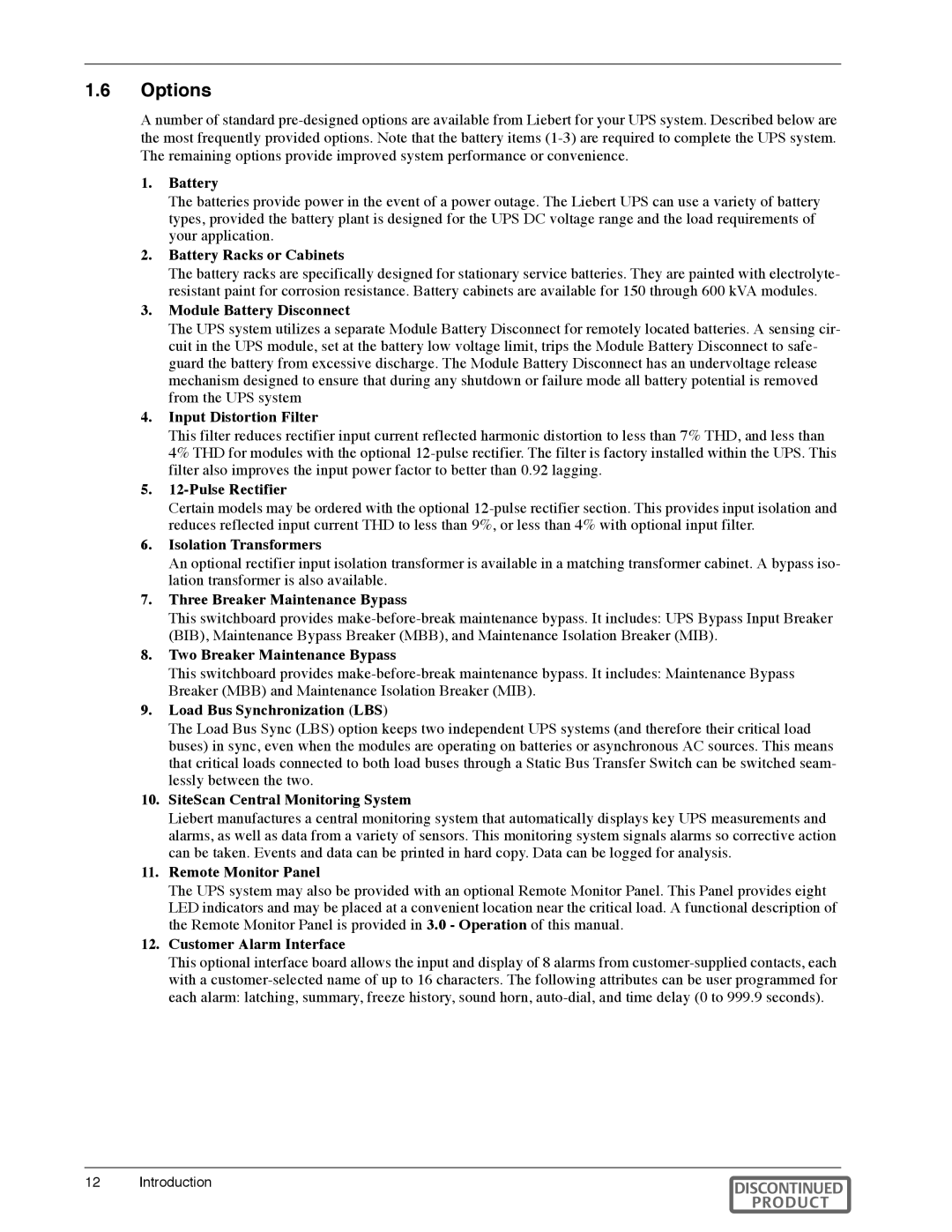
1.6Options
A number of standard
1.Battery
The batteries provide power in the event of a power outage. The Liebert UPS can use a variety of battery types, provided the battery plant is designed for the UPS DC voltage range and the load requirements of your application.
2.Battery Racks or Cabinets
The battery racks are specifically designed for stationary service batteries. They are painted with electrolyte- resistant paint for corrosion resistance. Battery cabinets are available for 150 through 600 kVA modules.
3.Module Battery Disconnect
The UPS system utilizes a separate Module Battery Disconnect for remotely located batteries. A sensing cir- cuit in the UPS module, set at the battery low voltage limit, trips the Module Battery Disconnect to safe- guard the battery from excessive discharge. The Module Battery Disconnect has an undervoltage release mechanism designed to ensure that during any shutdown or failure mode all battery potential is removed from the UPS system
4.Input Distortion Filter
This filter reduces rectifier input current reflected harmonic distortion to less than 7% THD, and less than 4% THD for modules with the optional
5.12-Pulse Rectifier
Certain models may be ordered with the optional
6.Isolation Transformers
An optional rectifier input isolation transformer is available in a matching transformer cabinet. A bypass iso- lation transformer is also available.
7.Three Breaker Maintenance Bypass
This switchboard provides
8.Two Breaker Maintenance Bypass
This switchboard provides
9.Load Bus Synchronization (LBS)
The Load Bus Sync (LBS) option keeps two independent UPS systems (and therefore their critical load buses) in sync, even when the modules are operating on batteries or asynchronous AC sources. This means that critical loads connected to both load buses through a Static Bus Transfer Switch can be switched seam- lessly between the two.
10.SiteScan Central Monitoring System
Liebert manufactures a central monitoring system that automatically displays key UPS measurements and alarms, as well as data from a variety of sensors. This monitoring system signals alarms so corrective action can be taken. Events and data can be printed in hard copy. Data can be logged for analysis.
11.Remote Monitor Panel
The UPS system may also be provided with an optional Remote Monitor Panel. This Panel provides eight LED indicators and may be placed at a convenient location near the critical load. A functional description of the Remote Monitor Panel is provided in 3.0 - Operation of this manual.
12.Customer Alarm Interface
This optional interface board allows the input and display of 8 alarms from
12 | Introduction | DISCONTINUED |
|
| PRODUCT |
